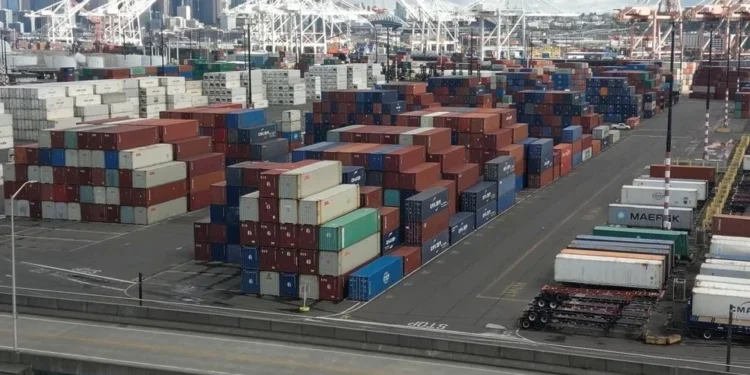State lawmakers have been working to understand Washington’s economic forecast after a less-than-optimal report showing slowed revenue growth.
While total state revenues are expected to grow between this and the next biennium, that growth has slowed down significantly.
“We’re seeing relatively slow growth from what we’ve seen in the past,” said David Reich, Executive Director and Chief Economist for the Washington Economic and Revenue Forecast Council.
Reich noted that so far this year, employment has only grown by about 0.3%. “Which is very slow employment growth for us,” he said. “So that’s kind of an indicator that the economy is growing kind of slow.”
As far as the government shutdown, which is now in its third week, Reich said those are “relatively modest economic events,” depending on how long they carry on.
Inflation due to tariffs has been “more modest than expected,” Reich said, likely due to timing, pullback and suppliers picking up added costs rather than passing them onto consumers.
“We’ve just seen lower price impacts than we would have expected,” Reich said. “We still expect those to happen just maybe not as large and spread out over 2026.”
Over 75% of the state’s revenue comes from three taxes: retail sales tax, business and occupation tax, and property tax. Reich said part of the lower-than-expected revenue is in taxable sales.
But he said not all sectors of the state’s economy are growing slowly right now. Imports and exports, for example, are up 7% year to date, especially in transportation equipment, likely attributable to new agreements that Boeing has made to sell planes to other countries.
He said agriculture is also doing well in exports. However, everything else within that bucket is down about 10% in the first half of the year.
“But that’s been happening for over a year or so, so it doesn’t seem to be necessarily driven by tariffs, it’s probably a change in global markets,” Reich said.
While the September report shows slow growth, Reich said he does think GDP will go up next month, having an overall positive effect.
“Our base case is not a recession,” he said. “Our base case is that we will continue to see growth, but just slow growth.”
Reich said there will likely be higher inflation for the next few years before getting back to a more predictable place in 2027, largely due to tariffs’ impacts working through the system.
The state’s next economic forecast will come out in November.
The 0.3% employment growth rate represents a dramatic slowdown from Washington’s typical labor market expansion, suggesting employers are hesitant to hire amid economic uncertainty despite relatively low unemployment rates. This cautious approach to hiring reflects concerns about future demand and potential recessionary pressures.
The 7% increase in imports and exports, driven primarily by Boeing aircraft sales, demonstrates Washington’s continued reliance on aerospace manufacturing as a cornerstone of the state’s economy, though the concentration creates vulnerability if Boeing faces production or sales challenges.
The disconnect between strong export performance and weak overall economic growth illustrates that export-driven sectors like aerospace and agriculture don’t necessarily create broad-based prosperity when other industries stagnate. These capital-intensive sectors employ relatively fewer workers compared to their economic output.
Reich’s projection that tariff impacts will spread throughout 2026 rather than hitting immediately suggests supply chains are absorbing costs in the short term, but eventually those expenses will flow through to consumers and businesses as contracts reset and inventory turns over.
The reliance on three taxes, retail sales, business and occupation, and property taxes, for over 75% of state revenue creates vulnerability to economic slowdowns, particularly in consumer spending. When residents cut back on purchases, the state budget feels immediate pressure.
Washington’s lack of a personal income tax means the state depends heavily on economic activity rather than individual earnings, making revenue more volatile during economic cycles compared to states with income taxes that provide more stable funding.







